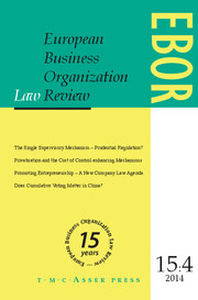Article contents
Sovereign Wealth Funds – Before and Since the Crisis
Published online by Cambridge University Press: 28 September 2009
Abstract
Sovereign wealth funds have been investing governments' foreign assets for decades, although it is only in recent times that such funds have emerged as managers of large ‘excess reserves’. Since the crisis however, the sources of funding for sovereign wealth funds have evaporated, while advanced economies are competing for capital injections from these funds. At the same time, the concerns about excessive investment of sovereign wealth funds in advanced economies that were widespread prior to the crisis, are now being voiced less frequently. Against this background, this article provides a reassessment of the growth prospects of sovereign wealth funds. Although the growth path for these funds indeed needs to be revised substantially, there are no grounds to believe that sovereign wealth funds will become less important players in global financial markets over the future, as the structural drivers behind the accumulation of large foreign assets in emerging economies remain in place. Hence, sovereign wealth funds are likely to continue growing and increase their relative importance in global financial markets. Therefore, it remains imperative to resume the efforts – that seem to be partly halted by the current economic and financial crisis – to build a global governance framework for sovereign wealth funds.
- Type
- Articles
- Information
- European Business Organization Law Review (EBOR) , Volume 10 , Issue 3 , September 2009 , pp. 353 - 367
- Copyright
- Copyright © T.M.C. Asser Press and the Authors 2009
- 7
- Cited by


